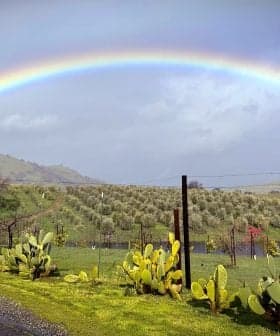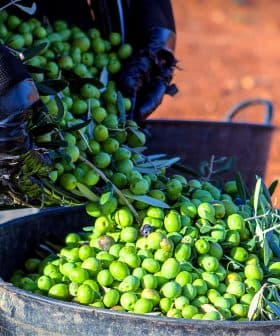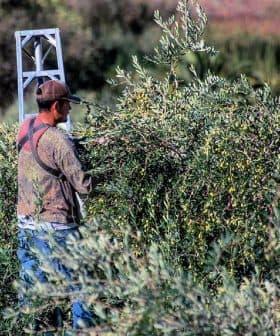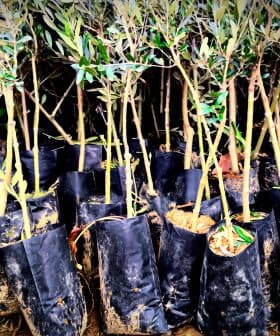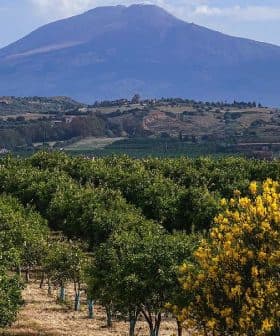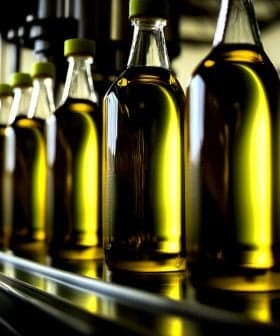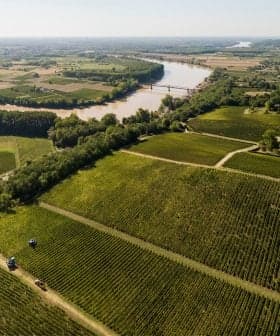Experts Predict Bigger Swings Between Wet and Dry Years in California

California’s weather is highly variable, with unpredictable water availability, making long-term planning essential for farmers. Olive growers in the state must adapt to changing conditions, with strategies such as upgrading irrigation systems and utilizing flood-MAR to build resilience to weather extremes.
There is no such thing as a “normal” weather year in California anymore. Olive producers have to be ready for anything at any time. As Golden State farmers wrap up their 2023 harvest and begin a new year, the water outlook is as uncertain as ever.
Predictions from the California Water Blog note that the main lesson of the wild 2023 water year is that California’s water situation is highly variable, averages are unreliable and improvements are needed to adapt to a constellation of interacting changes.
Olive growers should be thinking about alternative ways to take water during high-flow events, whether that’s building a multi-use recharge basin or having a plan to divert water to more tolerant crops on their acreage.
Anxiety and worry are often devoted to drought and water scarcity in California. Still, a new report from the State of California Department of Water Resources emphasizes that growers must not lose sight of the less frequent and shorter wet years.
“The real key here is long-term planning. Seasonal forecasts often get it wrong and aren’t yet equipped to deal with the next-generation weather that we’re experiencing,” Caitlin Peterson, the associate center director and research fellow at the Public Policy Institute of California (PPIC) Water Policy Center, told Olive Oil Times.
See Also:Corto Bets on Olives as Crop of The Future in Changing Sacramento Valley“That means growers must be ready for everything all at once,” she added. “They have to plan for the next extreme while in the current extreme.”
The PPIC Water Policy Center connects nonpartisan, objective research to real-world water management debates. Their work is designed to prepare for changing conditions and aims to improve current and develop future water management practices.
“We’ve seen in the past how the impacts of a given wet or dry cycle can vary across the state,” Peterson said. “Sometimes, this is a random variation in weather patterns.”
For example, the drought that impacted the state from 2020 to 2022 initially hit northern California the hardest; by 2021, the impacts became more widespread.
Other times, the PPIC said this could reflect differences in planning and coordination structures across local and regional entities, as with the disparate readiness levels for the 2023 floods seen across local governments.
The PPIC brief on drought and California agriculture outlines this as a dynamic situation of a fast-paced drought propelled by climate change, and the impact of new rules is reducing water availability and increasing crop water demands. The volatile situation includes dramatic swings between precipitation whiplash and megadrought.
“The northern half of the state is blessed with more abundant surface water and a smaller deficit in groundwater than the southern half of the state,” Peterson said. “Growers in the north may have more of a buffer and more management options when dealing with weather whiplash. But there will still be challenges, and growers statewide should be thinking about how to build their resilience.”
Peterson underscored the reduction of water supplies. “It’s important to keep in mind that growers will have significantly less irrigation water to work with in the coming years, especially in the San Joaquin Valley, where we estimate a 20 percent reduction in supplies by 2040.”
A 2023 PPIC policy report emphasizes critical issues for the future of agriculture in California’s San Joaquin Valley and the impending reduction in available water.
Much of that reduction is due to new rules designed to make groundwater extraction sustainable. This is considered a vital facet of securing a reliable water supply into the future.
“We estimate that at least half a million acres of agriculture land will come out of irrigated production by 2040 in the San Joaquin Valley,” Peterson said. “That means that regardless of what the weather is doing in a particular year, scarcity conditions or surplus conditions, on average, growers can count on less water.”
PPIC research on drought in California highlights the vital imperative for agriculture to adapt, whether by finding ways to harvest more water in wet years or by rethinking crop portfolios and cropping systems.
Wet conditions can be highly costly to agriculture due to flooding, crop loss and damage to infrastructure, yet farmers count on the wet years to get through the next dry years.
California’s farmers and olive growers seek practical actions to respond effectively to the mercurial conditions and seemingly non-stop deluge of extremes. Peterson outlined several actions for building resilience by keeping all management options on the table where possible.
See Also:Researchers Develop Algorithm to Predict Harvest Potential from Climate DataOlive growers could upgrade their irrigation systems to high-efficiency drip systems. At the same time, growers might also consider how to build systems that quickly move large quantities of water to fill an on-farm recharge basin with flood flows. A basin might sit idle for nine years out of 10 but must be immediately operational before a high-flow event is underway.
Irrigation systems can be costly, but the hope is that well-maintained systems pay dividends as part of a farm-wide water resilience strategy. Taking better advantage of the wet years in this way is a crucial strategy to help growers get through the dry years.
To compound the issue, last year’s wet winter and flooding in California raised the profile of flood-MAR, or spreading excess water on agricultural lands to percolate into aquifers.
“This is putting money into our collective groundwater savings account,” Peterson said. “This benefits the grower directly when they can claim a portion of the water they recharged for later use, and it benefits the basin when groundwater levels improve.”
Olives have not been specifically studied to gauge their tolerance for short-term inundation, but it is popularly known that olive trees need good drainage.
“To prepare for this, olive growers should be thinking about alternative ways to take water during high-flow events, whether that’s building a multi-use recharge basin or having a plan to divert water to more tolerant crops on their acreage,” Peterson said. “Keeping some acres in annuals is one way to do this, so you can have some flexibility on whether to plant or recharge.”
California olive growers may need to adopt a new role, defining themselves as water harvesters and looking for ways to store more water underground as a critical facet of resilience to weather whiplash.
The PPIC noted that it is getting easier for growers to divert flood flows for on-farm recharge, yet many kinks still exist.
Several policy changes could help California olive farmers adapt to the changing climate and ease the transition to groundwater sustainability.
According to the PPIC, the best thing growers can do is be prepared, be informed on the permitting options and regulations and seek government incentives where they are available to help support the kinds of investments needed.
California’s changing climate conditions continue making headlines, with growers evaluating how to best respond to looming weather challenges, from droughts to floods.
“I think people often assume that weather whiplash is a new phenomenon,” Peterson said. “On the contrary, California has always had a pendulum-style climate that swings from wet to dry on a more-or-less 10-year cycle.”
“The difference now is that the swings are getting bigger,” she added. “Dry years are getting hotter and drier. The jury is still out on whether wet years are getting wetter, but there’s some evidence to that effect.”
“We’re seeing more of our annual precipitation fall as rain rather than snow, which presents many challenges from a statewide water storage and distribution perspective,” Peterson concluded. “I think agriculture will continue to survive and thrive in California – but it might look a lot different in 20 years than it does now.”


